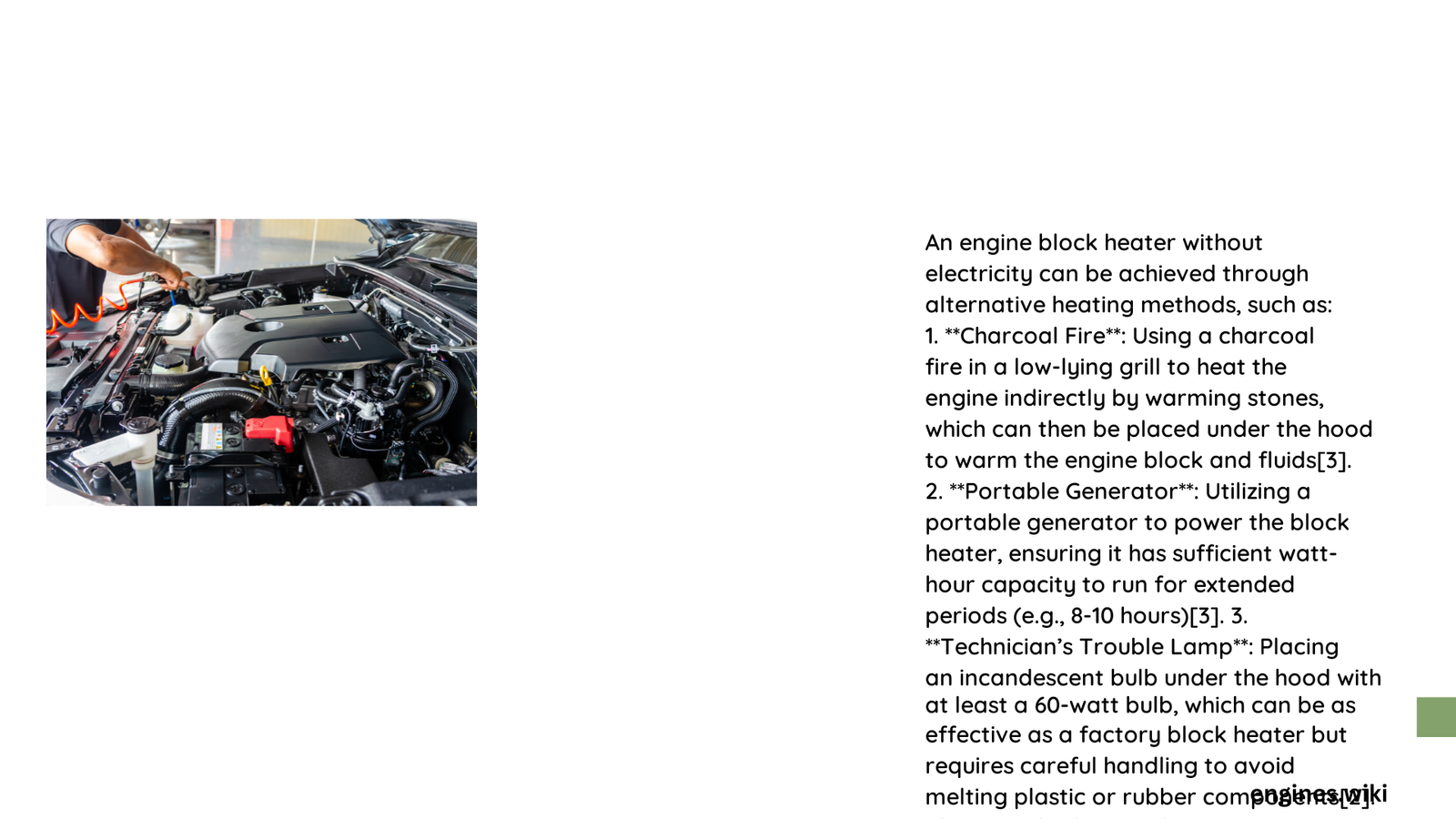Engine block heating without electricity represents a critical solution for vehicle owners in extreme cold environments. Traditional electric block heaters are not always practical, especially in remote locations or during power outages. Alternative heating methods leverage thermal dynamics, mechanical principles, and innovative design to maintain engine temperature and ensure reliable starts without electrical dependency.
What Are Non-Electric Engine Block Heating Techniques?
Non-electric engine block heating techniques utilize several innovative approaches to maintain optimal engine temperature:
Thermosiphon Heating Mechanisms
Thermosiphon heaters represent a fundamental non-electrical approach to engine block warming. These systems leverage natural convection principles to circulate and heat coolant without external power sources.
Key Characteristics of Thermosiphon Heaters
- Mechanism: Uses natural coolant circulation based on temperature differences
- No Electrical Requirements: Operates purely through thermal dynamics
- Installation: Compact design integrated with existing cooling system
- Effectiveness: Maintains engine block temperature in temperatures as low as -40°F
Mechanical Coolant Circulation Methods
| Heating Method | Power Source | Temperature Range | Effectiveness |
|---|---|---|---|
| Thermosiphon | Thermal Gradient | -40°F to 32°F | High |
| Forced Mechanical Circulation | Engine Movement | 0°F to 32°F | Moderate |
| Insulation-Based Heating | Residual Engine Heat | Above 20°F | Low |
How Do Thermosiphon Heaters Function?

Thermosiphon heaters operate on a simple yet ingenious principle:
- Temperature Differential Creation: Coolant near the engine block becomes warmer
- Natural Circulation: Warmer fluid rises, cooler fluid descends
- Continuous Heat Distribution: Creates a self-sustaining heating cycle
- No External Power Needed: Relies entirely on thermal dynamics
Advantages of Non-Electric Heating
- Reliability: No dependency on electrical systems
- Simplicity: Minimal moving parts
- Cost-Effective: No additional power consumption
- Durability: Less complex than electrical alternatives
What Materials Enhance Non-Electric Heating?
Several materials can improve non-electric engine block heating:
- High-Thermal-Conductivity Metals
- Copper alloys
- Aluminum composites
-
Specialized heat-transfer metals
-
Insulation Materials
- Ceramic-based wraps
- Advanced polymer insulators
- Reflective thermal barriers
Practical Implementation Strategies
Diesel and Heavy Equipment Applications
Diesel engines, particularly in industrial and agricultural settings, benefit significantly from non-electric heating techniques:
- Reduced Cold-Start Wear: Minimizes mechanical stress
- Improved Fuel Efficiency: Maintains optimal operating temperature
- Extended Engine Lifespan: Prevents cold-start complications
Limitations and Considerations
While non-electric heating methods offer unique advantages, they also present challenges:
- Limited Heating Range: Less effective in extremely low temperatures
- Slower Warm-Up Times: Compared to electrical alternatives
- Dependent on Ambient Conditions: Performance varies with environmental factors
Recommended Complementary Techniques
- Engine block insulation
- High-performance coolant mixtures
- Mechanical pre-heating techniques
- Strategic parking in sheltered locations
Conclusion
Non-electric engine block heating represents an innovative approach to maintaining vehicle performance in challenging environments. By understanding and implementing these techniques, vehicle owners can ensure reliable starts and reduce mechanical wear without relying on electrical infrastructure.
